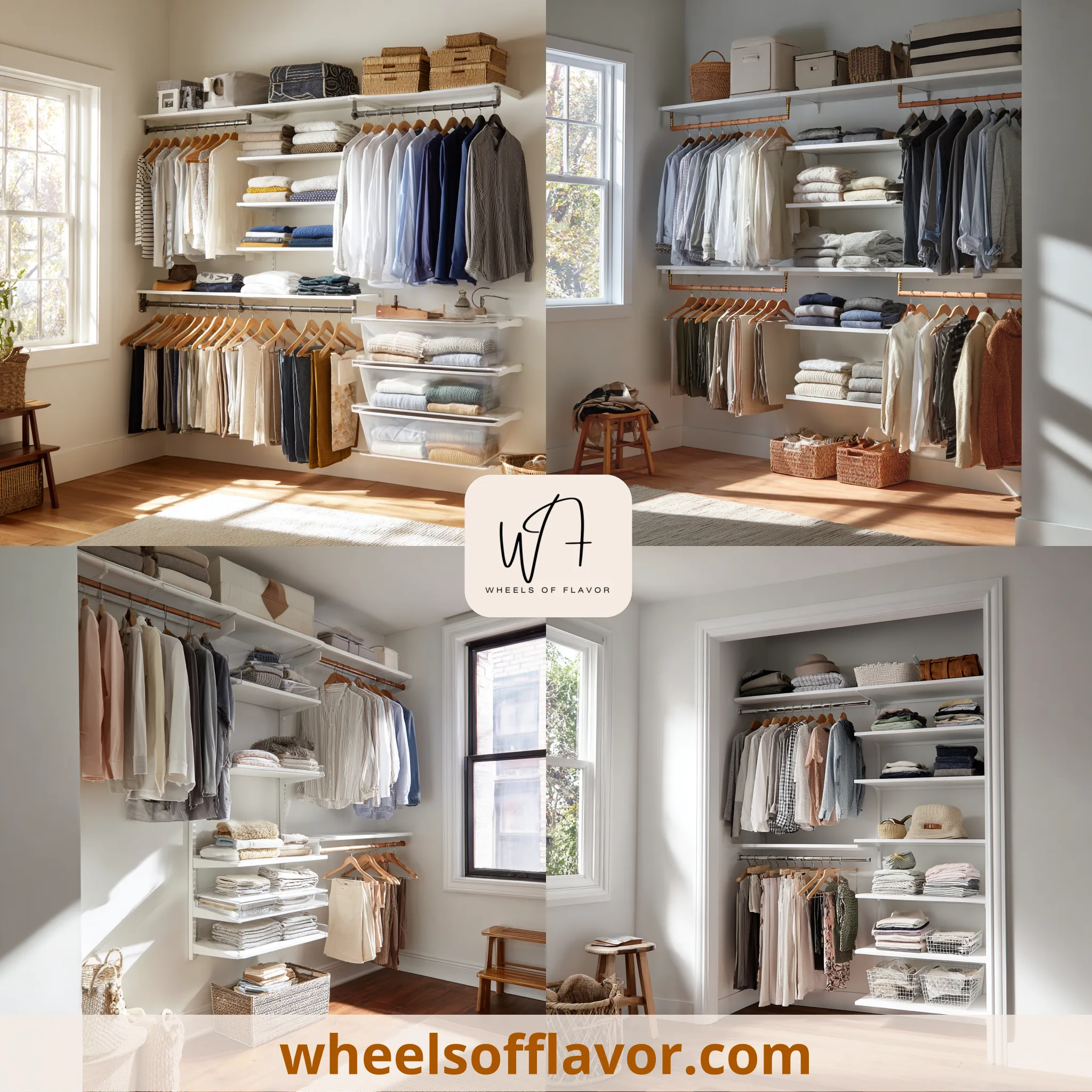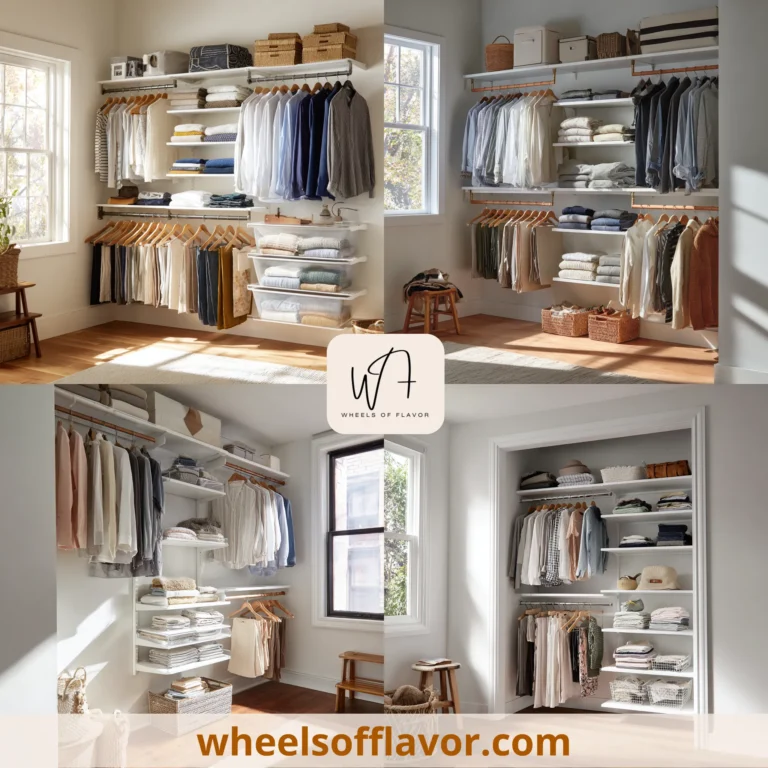
Are you tired of messy, disorganized closets that make finding your favorite outfit a daily challenge? DIY closet system ideas offer a game-changing approach to home organization that can revolutionize how you store and access your belongings. A well-designed closet isn’t just about aesthetics—it’s about functionality, efficiency, and creating a space that supports your lifestyle. Whether you’re dealing with a tiny reach-in closet or a spacious walk-in, implementing smart DIY solutions can maximize every inch of storage potential. These projects empower homeowners to customize their storage to fit exact needs, from shoe racks to hanging rods and shelving units. The beauty of DIY closet systems lies in their adaptability; you can start small with basic organizers or tackle a complete overhaul without breaking the bank. By investing time in planning and execution, you’ll enjoy long-term benefits like reduced clutter, easier morning routines, and even increased home value. Plus, tackling these projects yourself adds a personal touch that pre-made systems often lack. In this article, we’ll explore practical and inspiring DIY closet system ideas that cater to various skill levels and budgets, helping you create a closet that’s both beautiful and highly functional.
Essential DIY Closet System Ideas for Small Spaces
Small closets present unique challenges, but with clever DIY closet system ideas, you can turn cramped quarters into organized havens. Start by assessing your vertical space—installing floor-to-ceiling shelves or double hanging rods can double your storage capacity. For example, use sturdy wooden boards or metal brackets to create adjustable shelves above the main rod, perfect for storing folded items or bins. Another smart approach involves incorporating pull-out drawers or baskets beneath hanging clothes to utilize often-wasted lower space. If you're working with a reach-in closet, consider a tension rod system for easy, tool-free installation that allows for customizable sections. For those with basic woodworking skills, building a simple ladder shelf that leans against the back wall adds depth and accessibility. Materials like plywood, PVC pipes, or repurposed crates can keep costs low while delivering high functionality. Don't forget corner solutions; triangular shelves or rotating racks make awkward angles usable. To enhance visibility, add LED strip lights along shelves or rods—this small upgrade makes a big difference in dark closets. By focusing on multi-functional elements, such as a valet rod that doubles as a tie organizer, you'll maximize efficiency. These DIY closet system ideas prove that even the smallest spaces can become orderly and inviting with a bit of creativity.
Budget-Friendly DIY Closet System Ideas Using Upcycled Materials
Creating an effective closet system doesn't have to drain your wallet—budget-friendly DIY closet system ideas often thrive on upcycled materials and simple hacks. Start by scouting your home for items like old wooden pallets, which can be disassembled into shelves or dividers with minimal tools. For instance, sand down pallet wood to build rustic cubbies for shoes or accessories, adding a charming touch to your storage. Another cost-effective option is using PVC pipes to construct custom hanging rods or shoe racks; they're lightweight, durable, and easy to cut to size. If you have leftover plumbing supplies, repurpose copper pipes into elegant garment rods that resist sagging. For soft storage, transform fabric scraps into hanging organizers with pockets for jewelry or scarves. Thrift stores are goldmines for materials; an old bookshelf can be modified with hooks for belts or hats, while drawer units can be stacked to form a modular system. To keep things organized on a dime, label bins made from cardboard boxes covered in contact paper. When planning your DIY closet system ideas, remember that paint can unify mismatched elements—a coat of white or a bold color ties everything together. These approaches not only save money but also reduce waste, making your project eco-friendly. For more inspiration on upcycling, check out this guide from The Spruce, a trusted resource for home improvement tips.
Advanced DIY Closet System Ideas for Custom Walk-In Closets
For those with larger spaces, advanced DIY closet system ideas can transform a walk-in closet into a luxury dressing room. Begin with a detailed layout plan that zones areas for hanging, folding, and accessories. Built-in elements like floor-to-ceiling shelving units made from plywood or melamine offer a seamless look; use a circular saw for precise cuts and reinforce with L-brackets for stability. Incorporate specialized features such as a pull-out tie and belt rack or a velvet-lined jewelry drawer to elevate functionality. If you're handy with electrical work, wiring in built-in lighting under shelves or inside cabinets adds a high-end feel—opt for motion sensors for convenience. For shoe enthusiasts, angled shelving or clear acrylic boxes keeps pairs visible and protected. Don't overlook the island centerpiece; a DIY version with drawers for smaller items and a countertop for folding can serve as a functional focal point. To ensure durability, choose materials like solid wood or metal rods that withstand heavy use. When implementing these DIY closet system ideas, consider accessibility—include a rolling ladder for high shelves or step stools integrated into design. This level of customization not only boosts organization but also reflects personal style, turning your closet into a retreat. For related decor tips, explore our piece on maximizing bedroom storage at https://wheelsofflavor.com/bedroom-organization.
Conclusion
DIY closet system ideas empower you to take control of your storage space, transforming chaos into order with personalized touches. Throughout this article, we've explored strategies for small closets, budget-friendly upcycles, and advanced walk-in designs, each offering unique benefits tailored to different needs. By embracing these projects, you'll not only improve daily functionality but also gain a sense of accomplishment from creating something with your own hands. Remember, the key to success lies in careful planning—measure your space, choose materials wisely, and start with manageable steps if you're new to DIY. As you implement these ideas, consider how evolving lifestyle trends, like minimalism or smart home integration, might influence future updates. For instance, incorporating IoT sensors for inventory tracking could be the next frontier in closet organization. We encourage you to experiment and adapt these concepts to suit your preferences; the beauty of DIY is its flexibility. Share your results with friends or online communities to inspire others. With these DIY closet system ideas, you're well on your way to a clutter-free, efficient home that supports your routine for years to come.
Frequently Asked Questions
Q: What basic tools do I need to start a DIY closet system project?
For most DIY closet system ideas, essential tools include a measuring tape for accuracy, a level to ensure shelves are straight, a drill for assembling components, a saw (like a circular or hand saw) for cutting materials, and basic fasteners such as screws and brackets. If you're working with wood, sandpaper and safety gear like goggles are also recommended. Start with simple projects to build confidence before tackling complex builds.
Q: How can I make my DIY closet system adjustable for future changes?
To create an adjustable DIY closet system, use standards and brackets for shelves, which allow you to move them up or down easily. Opt for modular components like cube organizers or tension rods that can be reconfigured. Incorporating slatwall panels is another great idea—they support various hooks and shelves that can be rearranged as your storage needs evolve, ensuring long-term flexibility without major renovations.
Q: Are DIY closet systems durable compared to store-bought options?
Yes, DIY closet systems can be highly durable if constructed with quality materials and proper techniques. Using solid wood, metal hardware, and reinforced joints often results in sturdier systems than some mass-produced alternatives. The key is to follow best practices, such as anchoring to studs for heavy loads and selecting moisture-resistant materials for humid environments. With careful execution, a DIY system can last for decades, offering custom durability at a lower cost.

